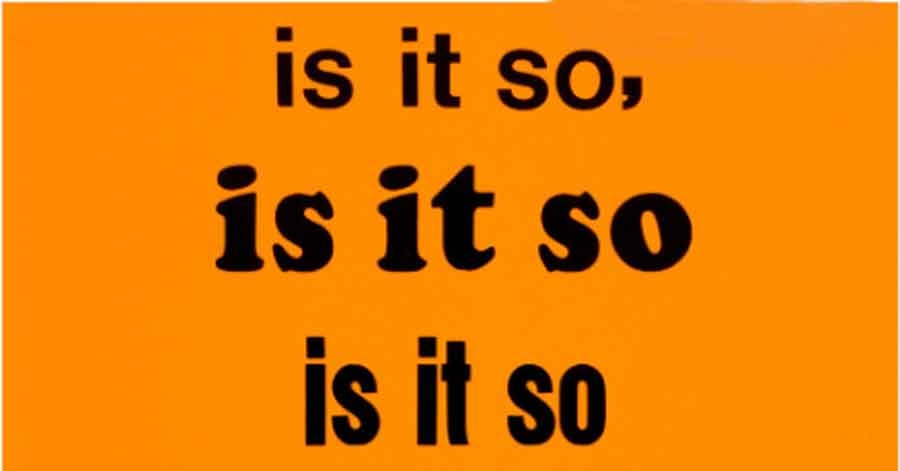Do you read any online art magazines? It’s easy to consume a lot of images and textual snippets on the Internet, but what about the kind of long-form texts and artist projects that we associate with serious art magazines and journals? Many people complain that the Internet is a highly distracted space, and say that their reading and viewing habits onscreen and off- are very different. But the possibilities for screen-based reading and viewing have been changing in recent years, and one organization that has been anticipating these changes is Triple Canopy, an online magazine that launched in 2008 under the slogan ‘Slow down the Internet’.
Triple Canopy is run by a New York-based collective of writers, artists and technologists. At the heart of its operation is a sophisticated journal centred on art and literature, a publication that contains a mix of creative and critical projects. A recent edition of the magazine included, among other things: a word-andimage piece employing animated GIFs, by artist Sara Greenberger Rafferty; a story by painter Rebecca Bird, illustrated with short animations; an essay on the brain by scholar Isabelle Moffat; and an interactive piece evoking the siege of Sarajevo, by artist Adela Jušić.
One distinctive feature of Triple Canopy, as the above might suggest, is its combination of text and images – the traditional materials of a magazine – with video, audio and interactive components. The ability to give readers a richer, augmented experience is of course one of the advantages of an online magazine, and in this respect Triple Canopy harks back to experimental multimedia journals of the 1960s and 70s. These include projects such as Aspen, the American ‘magazine in a box’ that included flexidiscs and Super-8 film; as well as magazines on audiocassette like the British journal Audio Arts.
Another distinctive feature of Triple Canopy is the way in which its projects are presented within a reader-friendly environment, one that reproduces some of the advantages of the space of the page. In its first iteration, the magazine employed a special onscreen frame that determined that all projects were experienced as a horizontal sequence of distinct pages. Although the latest version of Triple Canopy, launched at the end of 2013, has relaxed this format, the new design preserves the sense of calm and containment – and high design values – that has made the magazine distinctive from the start.
One reason for Triple Canopy’s new format may be that the conditions for onscreen reading are changing rapidly. In part this is because the advent of tablets and smartphones has provided us with tools more suited to extended reading. Previously we encountered onscreen texts on our personal computers, devices that were often deskbound, offering many alternate paths for our attention, and on which reading had to compete with task-based activities. Now many of us are reading on handheld devices, objects which were designed to offer a simple reading experience as one of their functions, and which we can take almost anywhere.
Net commentators are increasingly talking about a new ‘postdigital’ world, characterized by a mindset within which digital technology has become mainstream; a world in which the individual moves easily between ‘old’ and ‘new’ media, utilising both.
Given the advent of these handheld devices, it is surprising that so few online art magazines have emerged that can rival Triple Canopy’s sophistication. For example, the excellent e-flux journal focuses primarily on long-form texts, with little effort to style the reading environment or to employ complex audiovisual elements. It could be argued that the journal’s simplicity is its strength, as the publication’s lack of formatting – and lack of large audiovisual files – means that it flows with greater ease across a multitude of different devices. But it does this by making text its unchallenged king.
The question inevitably arises, however, whether we should even try to replicate the magazine format – with its odd combination of virtues – within the digital environment. Net commentators are increasingly talking about a new ‘postdigital’ world, characterized by a mindset within which digital technology has become mainstream; a world in which the individual moves easily between ‘old’ and ‘new’ media, utilising both according to their advantages. This thinking would suggest that in the future the more progressive magazines might not be online, but rather postdigital.
This postdigital attitude is manifest in the expanded approach to publishing that the relaunched Triple Canopy has adopted. The editors now describe their online platform as a hub for a range of activities that include printed matter and live events – a strategy that is being recognised in the Whitney Biennial this spring, where the collective will mount an installation to launch a new ‘issue’. According to the editors, ‘We see the distinction between the Internet and real life diminishing rapidly, dramatically.’ Triple Canopy is still committed to creating a space that is conducive to the measured consumption of art and writing, but declares that ‘while we used to invoke the slogan Slow down the Internet, now we’re moving on to the more apt, if more comical, Slow down the world’.
This article was originally published in the March 2014 issue.
